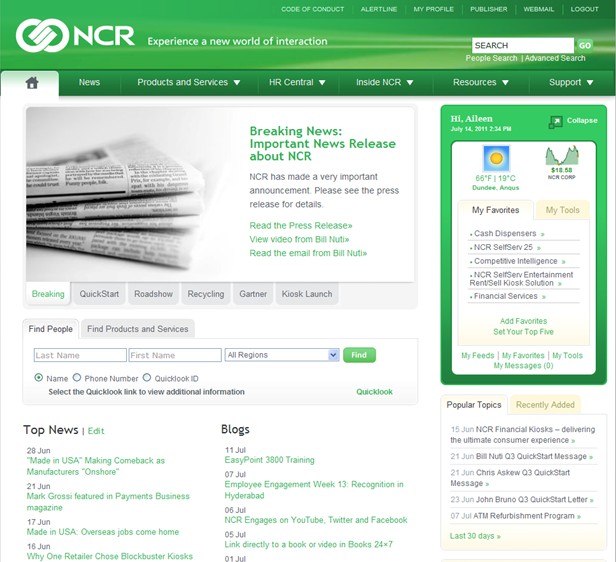Great intranets are not built from the bottom-up; they are not populist, user-driven systems. The content can be, but the success of the intranet begins and ends in the executive suite, not the cafeteria.
Employees should be at the center of the user experience, and the end content, but the intranet should reflect and support the entire business, which is launched by great entrepreneurs, and maintained by men and women of power with money. And intranets require money, and people. Grassroots intranets are almost always a disaster: no rules, an incongruous to terrible user experience, wildly inconsistent content, and a search engine that would make the original Alta Vista search engine blush.
Now some of you, including some of the more vocal pundits are vigorously shaking their heads in disagreement right now and loudly proclaiming,”Wrong! The intranet is all about people, about employees!”
No, not exclusively. The target audience are employees, but the intranet must support the whole business, including executives, and the strategic directives of ownership, the Board, and that little group called the customers. Get the difference? The employees are critical to the end state of system, and the business as a whole, but they’re not the only consideration. The money, resources, and governance, that has to come from the top, and as such, a great intranet requires an engaged executive team, that not only support and use the intranet, but fund it accordingly.
Business is not a democracy. And as Trump is learning the hard way, democracy is not a business. Did you elect your CEO or Administrator? Do employees determine strategic goals, budget, hiring decisions? Never.
Great intranets support the entire business, not just front line employees; great intranets have great governance. And when they lack great governance, the intranet is hindered, hampered or just plain sucks.
Far from being a buzz word or jargon, intranet governance provides clarity and rules namely the titles, roles and responsibilities of its owners, managers, stakeholders and contributors.
Simply put, governance defines an intranet’s ownership and management model and structure including the:
- Management team
- Roles & responsibilities of contributors
- Decision making process
- Policies & standards
Like the content of your website or intranet, planning and governance is technology agnostic; whether it’s SharePoint, IBM or another portal or content management system, the necessity for and the approach to governance is the same. Given its technology neutral status, governance is largely applicable to any technology platform.
Who should own the intranet? Communications? IT? HR? All of them? You may be shocked to learn that many companies don’t know the answer; in fact, many organizations can’t clearly answer with any confidence whom is the present intranet owner.
As is the case with most intranets it is simply impossible to achieve any long-lasting success without a clearly defined ownership and management structure.
Here’s a couple of hints: every intranet needs an executive champion or two, and a day-to-day business owner, and a day-to-day technology owner. Communications and IT often fill most of these roles, but it can vary depending on the business and their culture.
Learn more about governance and governance structure from our my last webinar on governance, How To Govern An Intranet:
Many world-class intranets and digital workplaces, including those from Google, Coca-Cola, Bayer, and others, with detailed case studies are presenting at this year’s Digital Workplace & Intranet Global Forum conference in New York (Oct. 25 – 26). Early-bird registration is only $890 for the full conference.
Want more intranet articles and case studies? SUBSCRIBE TO THE FREE INTRANET INSIGHT NEWSLETTER
